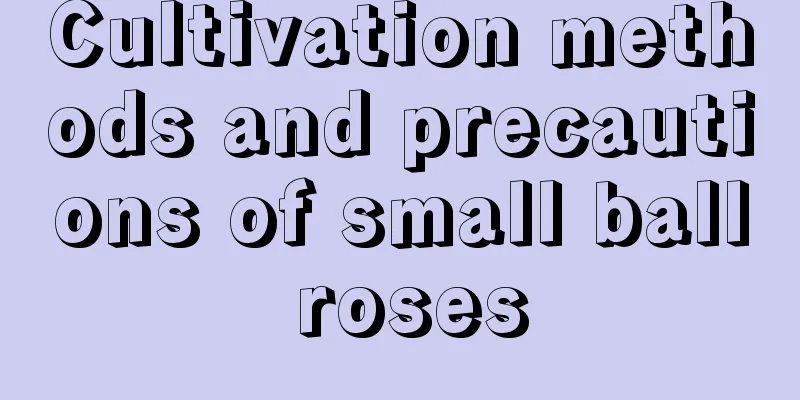Cultivation methods and precautions of small ball roses

How to grow small rosesPot soil requirementsThe potting soil should be as loose and breathable as possible. You can choose peat soil and granular soil in a ratio of 3 to 2. When preparing the soil, do not mix too many substances in it, such as pine needles, peat, bone meal... Just choose one. Too much complexity will be detrimental to the growth of the plants. Lighting requirementsThe rose hips prefer a warm, dry and sunny environment, so they must be given enough light. If there is insufficient light and too much water, the rose hips will elongate, the leaves will become loose, and the color will turn green. Then the name "Dragon Blood Sedum" of the rose hips will disappear. Only under sufficient light and appropriate temperature difference will the rose hip turn blood red, and the plant shape will remain beautiful, not inferior to the rose. Watering methodIn summer, provide shade to cool down as much as possible, give very little water, or even stop watering. If watering is given, it should be done in the evening. In other seasons, do not water unless the soil is dry, but reducing watering appropriately can make the rose bulb look more rosy. Reproduction methodThe branch cutting method is generally used. As time goes by, the leaves at the bottom of the rose will gradually fall off, causing the nodes to become longer, so cuttings should be combined with pruning. Cut off the branches that are too long to promote branching, and use the cut branches for cuttings, which are very easy to survive. However, try to avoid cold winters and hot summers when breeding. Precautions for the cultivation of small ball rosesShallow pot plantingThe root system of the rose hip is relatively shallow, so try to choose a shallow pot for planting. A pot that is too large will hinder the growth of the plant. Appropriate exposureWith long-term growth, the lower leaves will fall off at different lengths. This is a normal phenomenon. When the stem nodes become bare, you can prune them to cut off the exposed parts to promote branching and grow new branches and leaves. |
<<: Home cultivation methods and precautions of Buddaria
>>: How to cultivate golden chrysanthemum
Recommend
Time and method of changing the soil of pitaya
Dragon fruit soil change time For pitaya, the bes...
How to grow soybean sprouts
1. Choose soybean varieties When selecting seeds,...
Keeping these climbing plants at home can save a lot of decoration money!
Hoya When the ball orchid blooms, it looks like a...
What to do if the leaves of Dutch iron turn yellow
1. Temperature reasons In fact, this is a very ea...
How to reproduce green algae balls? Reproduction method and time
How to reproduce green algae balls Green algae ba...
How to make carnation tea
1. Benefits of this drink Its efficacy and effect...
What fertilizer is good for yew
1. What kind of fertilizer is good? Generally, co...
The difference between Bauhinia and Crape Myrtle
1. Leaf Difference The leaves of Bauhinia are lea...
How to water Anthurium
Tips for watering Anthurium Anthurium, also known...
Is carrot a fruit or a vegetable?
Is carrot a fruit or a vegetable? Fruit radish is...
Apple Planting Technology and Management
It is very important to choose the variety before...
Does June Snow prefer shade or sun?
Does June Snow prefer shade or sun? June snow is ...
How to propagate soapberry trees and what to pay attention to
How to reproduce the honeysuckle tree The main me...
How many years does it take for a blueberry tree to bear fruit?
Introduction to Growing Blueberry Trees Blueberry...
The growing environment and local conditions of chrysanthemum
Chrysanthemum Growth Environment and Conditions C...









